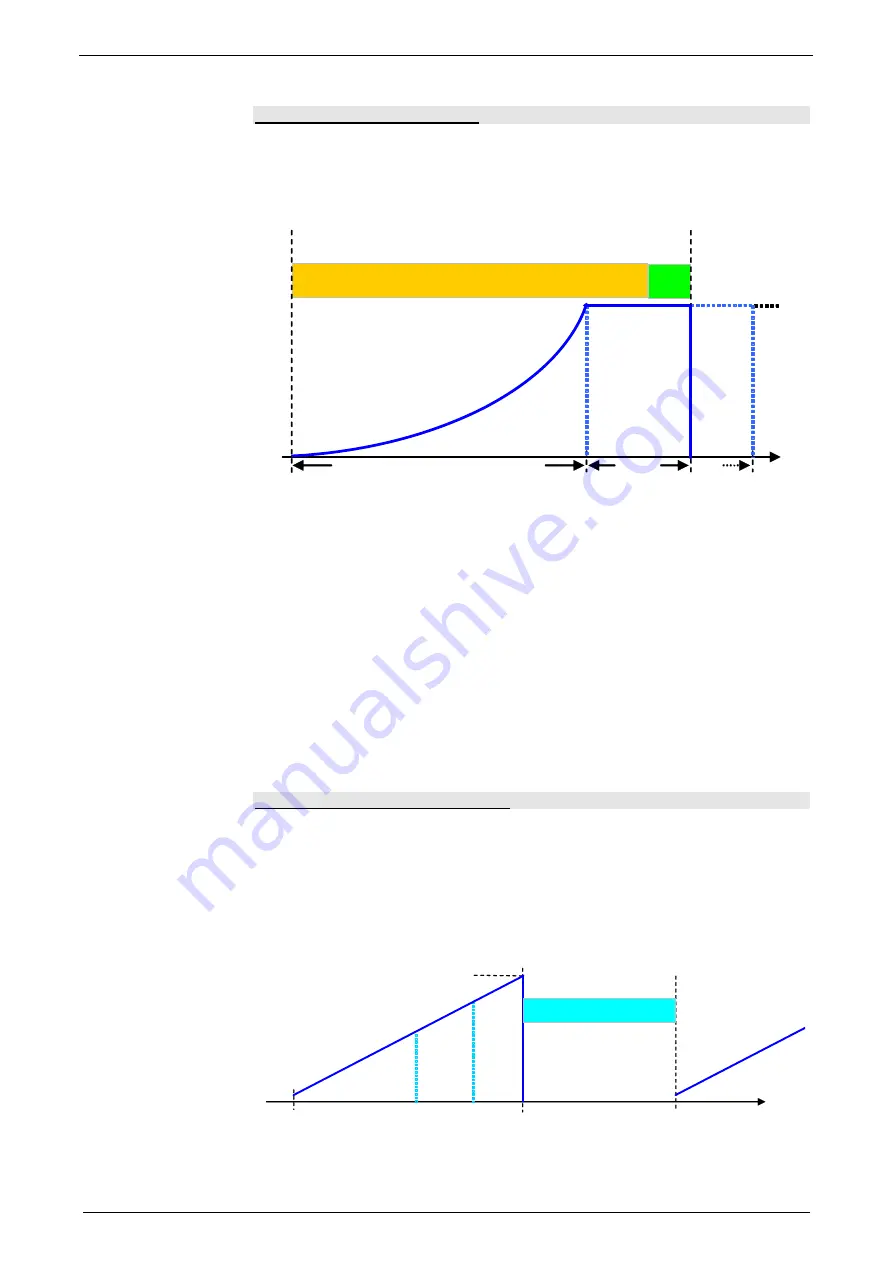
Setting
up Compax3
Positioning via digital I/Os
168
192-120101 N11 C3I11T11 November 2007
Latching of the motor (phase 2)
Here, the drive is brought to the position with the provided motor torque=0, where
the angular error is -180° or 0°.
Current rise in the second phase.
O2190.1
t
1)
Timp*k1-O2190.1,
max. O2190.1
3)
2)
O2190.1:
Rising time of latching current
1)
Maximum current from controller or motor
2)
Monitoring on 5° electrical movement
3)
Monitoring on 60° electrical movement
Motion reduction:
It is possible, to considerably reduce the motor movement occuring during the fine
angle search with the aid of the "motion reduction" parameter (O2190.4).
Please respect also that the acquired commutation result may be slightly worse
than without this measure.
As a current well above the nominal motor current is provided here, there may be
saturation effects on ironcore motors, which might lead to an instable current loop
(-> highly frequent "creaking noises" during the automatic commutation). This can
be avoided by activating the saturation characteristic line in the motor data.
Test for positive feedback (phase 3)
Here it is verified, if the motor performs a motion in the expected positive direction
in the event of positive current in the torque maximum. The same motion threshold
(defined via O2190.3) as in phase 1 is valid. The test is repeated several times.
A current course in ramp form is specified (target: minimum movement). The break
between the tests varies witht he current rise time O2191.1.
Illustration of the third phase
t
t1
t
test
I
max
t1+t
test_max
t
=f(O2190.1)
1)
1): Waiting
for
standstill
tp Waiting
for
standstill
Hint






























